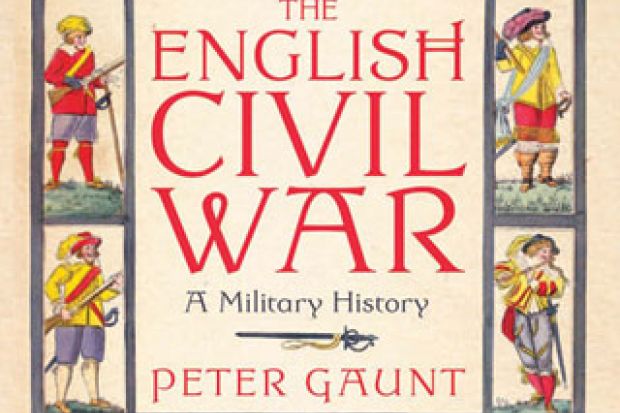Military history is a flourishing but decidedly plural genre. Retired commanders drawn to the subject doggedly pursue the smallest details of predecessors’ campaign strategies, battles and sieges. More mainstream historians place greater emphasis on the surrounding political, economic and social context in examining the complexities of allegiance, side-changing, recruitment, organisation, provisioning, pay, morale and the disruptive and deadly impact of war on the civilian population.
With respect to the English Civil War in particular, there has been a large crop of biographies of Civil War generals, Oliver Cromwell especially. The military, social and religious significance of Parliament’s New Model Army has attracted the attention of a steady stream of historians, from C. H. Firth, in 1902, onwards. In the past two decades, Peter Edwards examined the arms trade of the 1640s, Stephen Porter offered a detailed survey of the physical destruction inflicted on the country during those years, and Barbara Donagan’s War in England 1642-1649 movingly portrayed the human cost of the conflict – suffering, grief, death and maiming – through a woman’s eyes.
In this compact account, Peter Gaunt chiefly provides a chronological military narrative of the First Civil War (1642-46) – briefly mentioning the short sequels of 1648 and 1651 – and offers easily accessible accounts for non-specialists of weaponry, tactics and army organisation. He displays an expert first-hand knowledge of Civil War military geography and furnishes an astute assessment of rival Royalist and Parliament versions, as well as strictly contemporary or retrospective accounts, of the same events. Regional variations in the experience of the war come out clearly, as do the untidiness, patchiness and shifting tides of conflict. Mistakes and missed opportunities on both sides are highlighted, as are some shocking atrocities (as at the taking of Bolton in 1644).
Some will be surprised at the short duration of major battles; Marston Moor (1644) was over in about two hours, and even the later, decisive Parliamentarian victory at Naseby (1645) took only half a day to accomplish. Sieges, by contrast – as at Chester and Basing House, Hampshire – could drag on interminably.
But this book’s central narrative is carefully framed within a bigger picture that judiciously assesses the modern historiography of the origins, outcome and legacy of the Civil War upheavals. Those seeking a brief summary of the reasons why Parliament won and Charles I lost the war will find Gaunt a very helpful guide. There is no simple answer, of course, although Parliament’s control of London throughout the war surely played a major part.
Gaunt makes excellent use of the many surviving personal histories of this period and indeed begins his book not with the outbreak of open hostilities in 1642 but with the year 1644 and with contrasting testimonies from individuals – civilian and military, male and female – living in different parts of the country and in different circumstances.
A stark final reckoning is offered of the financial and human cost of the conflict. The war effort was staggeringly expensive and entailed heavy taxation on top of the requisitioning of goods, timber, horses and food supplies and the quartering in private houses of troops on the move. As a proportion of the population of the time, deaths in the English Civil War exceeded those in the First World War. For that reason alone it is hardly surprising that it has become so deeply etched in national memory.
This is an effectively presented book, and it displays a comprehensive and up-to-date knowledge of the research of other scholars working in this crowded field. It offers a useful guide to further reading, clear and helpful maps of different stages of the conflict and 30 high-definition colour illustrations. However, its much more numerous black-and-white photographs, although well chosen, tend to be grey and faint. Moreover, a reproduction of the woodcut engraving of what purports to be the earliest known image of Cromwell from the mid-1640s – extremely conventional in its pose and style – is surely only a representation and not a likeness.
The English Civil War: A Military History
By Peter Gaunt
I. B. Tauris, 256pp, £19.99
ISBN 9781848858817
Published 30 May 2014
Register to continue
Why register?
- Registration is free and only takes a moment
- Once registered, you can read 3 articles a month
- Sign up for our newsletter
Subscribe
Or subscribe for unlimited access to:
- Unlimited access to news, views, insights & reviews
- Digital editions
- Digital access to THE’s university and college rankings analysis
Already registered or a current subscriber? Login





